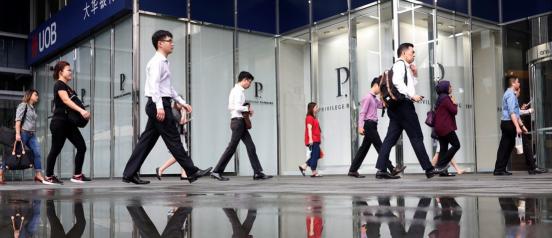How can Asia close the gap between the haves and the have-nots?
来源:;发表于:2017-05-11;人气指数:313
How can Asia close the gap between the haves and the have-nots?
This article is part of the World Economic Forum on ASEAN 2017
 Image: REUTERS/Edgar Su
Image: REUTERS/Edgar Su
11 May 2017
Jin LiqunPresident, Asian Infrastructure Investment Bank (AIIB)
We have entered a time of unprecedented change in the world. It is a time when countries and international organizations are looking to the world stage and re-examining the role they want to play in its future. Faced with such a situation, we must then ask ourselves the question: If globalization defined the 20th century, what will define the 21st?
In Asia, a most notable feature over the past several decades has been its sustained high growth. Most Asian countries are very open, with vibrant regional cooperation in trade and cross-border investments. Although Asian countries still trail behind European countries so far as financial integration is concerned, recent years have seen increased momentum in investments to improve connectivity across Asia.
But the reality is that trade and world economic integration have suffered setbacks for one big reason: a lack of shared benefits and obvious polarization between high-income and lower-income countries. And even within high-income countries, there are extreme divides between the haves and the have-nots.
Bridging the gap
In my opinion, better global governance is the key to addressing this imbalance. This is particularly important, if not more so, within nation states. Promoting regional connectivity requires governments of many developing countries to adopt better domestic policies that will lower entry barriers for private investment. Unless these obstacles are addressed, they will limit the participation of private capital, thereby adversely affecting economic and social outcomes in those countries.
The narrative of regional cooperation and cross-border connectivity needs to be stressed, and the economic opportunities should be clear and fair for all involved. It seems that what defines the 21st century should be shared benefits under improved global governance. What is crucial is a 21st century version of globalization – an updated form of internationalism.
Sustainable growth
The Asian Infrastructure Investment Bank was established to address, to a certain extent, the challenges faced by its members against such a backdrop. The Bank has the mandate to foster sustainable economic growth and development, as well as promote regional connectivity and cooperation, through investment in infrastructure and other productive sectors.
I believe the multilateral development banks, such as the Asian Infrastructure Investment Bank, the World Bank and the Asian Development Bank, must promote a holistic approach to development that recognizes the importance of looking across sub sectors and across borders.
And from this vantage point, we must improve economic outcomes, balanced with environmental protection, in all our projects whether we are investing in power, transport or urban infrastructure. This is a topic I will be championing as a co-chair at the World Economic Forum on ASEAN in Cambodia this year.
However, as we push forward with our mandates to invest in new infrastructure and other sectors, it is imperative that these projects are prepared and implemented with a critical eye. A sustainability lens must be applied to all our investments if internationalism is to succeed.
Shared value can take many forms. Addressing climate change by protecting the habitats and biodiversity where we implement infrastructure projects in our client countries speaks to our common goals. Striking the right balance between development for all and environmental protection is at the heart of our envisioned new form of internationalism, which aims for no country to be left behind.